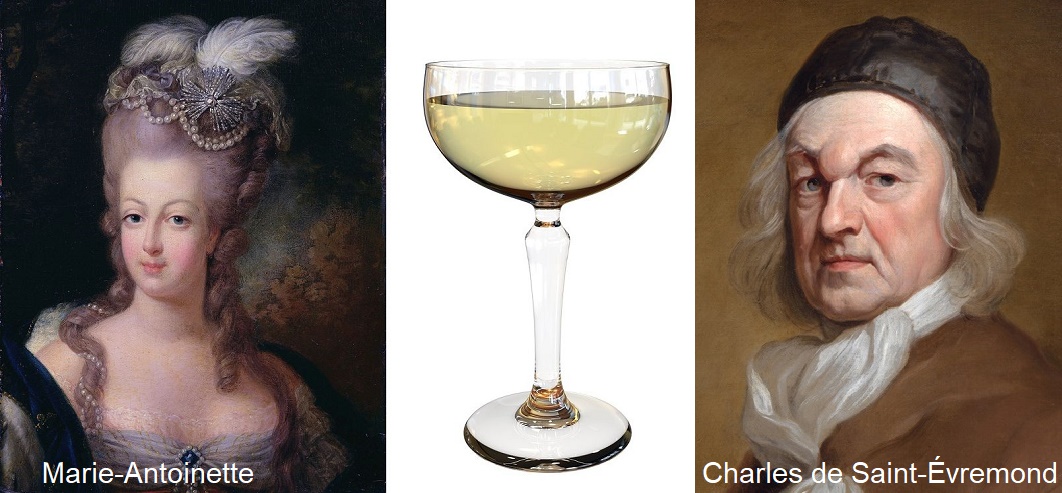Legend has it that the champagne glass, which was particularly popular in the 19th century, was modelled on the bosom of Marie-Antoinette (1755-1793) in the form of a shallow bowl (French: coupe). The marriage to King Louis XVI (1754-1793) was a typical union of the ruling dynasties of the time for political reasons. The youngest daughter of the Austrian Empress Maria Theresa (1717-1780) was married to the 15-year-old Dauphin at the age of 14 and crowned Queen of France four years later. Marie-Antoinette led a lavish, reckless lifestyle, aroused the hatred of her subjects with the infamous "collar affair" and, like her husband, died in the turmoil of the French Revolution under the Guillotine. The famous saying "If they have no bread, let them eat brioche" (in response to the accusation that the poor could not buy bread), is wrongly attributed to her.

Other ladies are also mentioned whose breasts are said to have served as a "model" for the champagne glass. The actual design for the bowl-shaped glass is attributed to the French author Marquis de Saint-Évremond (1610-1703), who made a great contribution to the popularity and spread or "invention" of champagne. However, the flat coupes are not particularly suitable for champagne or sparkling wines due to the large surface area of the liquid, which causes the carbon dioxide to escape too quickly, resulting in a stale flavour, which is why goblets with a small surface area are generally preferred today (flûte = flute). See also under wine glasses and wine vessels.
Marie-Antoinette: image from WikiImages on Pixabay
Coupe: from Wilson Blanco on Pixabay
Charles Évremont: by Godfrey Kneller - Public domain, Link
Voices of our members

There is a vast number of sources on the web where one can acquire knowledge about wine. But none has the scope, timeliness and accuracy of the information in the encyclopaedia at wein.plus. I use it regularly and rely on it.
Sigi Hiss
freier Autor und Weinberater (Fine, Vinum u.a.), Bad Krozingen